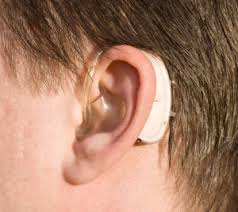 Just recently, we had an older gentleman come in to our audiologists‘ office who had been suffering from hearing loss for several years and his existing hearing aid just didn’t seem to be working. We checked out the “hearing aids” he had been using the last few years only to discover that it wasn’t even a hearing aid! Unfortunately, this is an all too familiar story. Many retailers, especially those offering low cost hearing aid solutions, sell what is known as amplifiers instead of real hearing aids. There is a distinct difference between the two and an amplifier cannot offer treatment for hearing loss. In fact the deputy director of the FDA’s Division of Ophthalmic, Neurological, And Ear Nose and Throat Devices stated that using an amplifier as a substitute for a hearing aid can lead to more damage to your hearing.
Just recently, we had an older gentleman come in to our audiologists‘ office who had been suffering from hearing loss for several years and his existing hearing aid just didn’t seem to be working. We checked out the “hearing aids” he had been using the last few years only to discover that it wasn’t even a hearing aid! Unfortunately, this is an all too familiar story. Many retailers, especially those offering low cost hearing aid solutions, sell what is known as amplifiers instead of real hearing aids. There is a distinct difference between the two and an amplifier cannot offer treatment for hearing loss. In fact the deputy director of the FDA’s Division of Ophthalmic, Neurological, And Ear Nose and Throat Devices stated that using an amplifier as a substitute for a hearing aid can lead to more damage to your hearing.
A personal sound amplification product (PSAP) is not intended to make up for impaired hearing according to FDA guidelines; they are intended for non-hearing-impaired consumers to amplify surrounding sounds. They are usually utilized as an adjunct to hear soft or distant sounds, for instance by hunters attempting to hear prey, bird watching or listening to distant conversations or performances. They do not treat, nor are they intended to treat, hearing impairment.
Hearing aids on the other hand are designed and intended to treat hearing impairment. They are fairly simple devices that consist of four basic parts and come in a variety of sizes, shapes and price points. First, there is a battery compartment that provides power to the hearing aid. They all have a microphone that picks up surrounding sounds and then converts it into an electrical signal which is then sent to the amplifier. The amplifier then increases the volume of sounds and sends it on to the receiver. The receiver will convert the electrical signal back into sound and send it into the ear canal for the brain to process.
An audiologist is able to manipulate the electrical signals to accommodate the type of hearing loss an individual has. For instance, say the patient has a hard time hearing the lower range of sounds, an audiologist can adjust the lower sound ranges to have them more amplified than the upper ranges. There are several different types of hearing aids and they are all adjustable and customizable to a degree; your doctor will do an audiogram to determine which type, size and customization level would best treat your hearing impairment.
If you have, or suspect you have, a hearing impairment, don’t just assume you will be fine with any hearing device, particularly one that you find in the back of a magazine that offers no followup care. Make an appointment to see an audiologist, who is able to treat your hearing impairment appropriately and help alleviate any further damage to your hearing.

